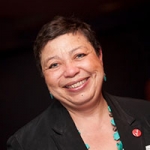
Dalouge Smith

Dr. John Iversen
The SIMPHONY Project: How Does Music Change a Child's Brain?
Posted by Mar 20, 2015

Dalouge Smith

Dr. John Iversen
Music is a central part of life for many of us, whether we listen, dance or play. It makes us feel good, or transports our imagination, but what is going on in our brain? Can music be used to help an ailing brain, or boost a learning one? An emerging field of Music Cognition is studying these important questions using new tools such as brain imaging that allow us to examine how the brain is changed by music. In this post we would like to tell you about one study we are doing that is trying to answer some of these questions.
In a collaboration between the University of California, San Diego, and the San Diego Youth Symphony and Conservatory, we have started the SIMPHONY project to ask the important question: "How does music change a child's brain?"
Read More













 Kellyn Lopes
Kellyn Lopes
 Jeff Poulin
Jeff Poulin

 David Dombrosky
David Dombrosky

 Heather Ikemire
Heather Ikemire

 Laura Perille
Laura Perille

 Allison Ball
Allison Ball

 Adarsh Alphons
Adarsh Alphons

 Jonathan Herman
Jonathan Herman

 Denise Montgomery
Denise Montgomery











